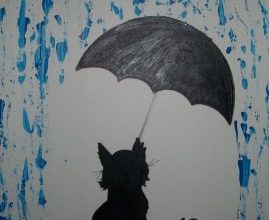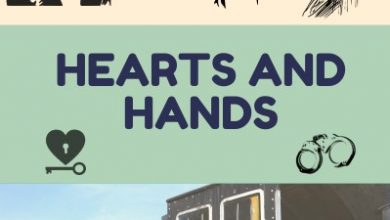
“The Snare” is a short poem written by the Irish poet and novelist, James Stephens, who is well known for his retellings of many Irish myths, especially owing to the rare combination of humour and lyricism that is found in them. His compassionate poems towards animals, such as The Snare, exhibits his pantheistic philosophy. His works are also influenced by the political issues of the time due his involvement in the Irish National Movement.
In this poem, the poet expresses his distress over a rabbit who is caught in a snare, probably set up by some hunter, and his desperate attempts to find it and free it from this trap. However, to his absolute dejection, despite looking everywhere and trying his best to find the place where the rabbit’s paw is stuck, he is unable to do so.
The Snare | Summary
The Snare | Summary (Lines 1-4)
I hear a sudden cry of pain!
There is a rabbit in a snare:
Now I hear the cry again,
But I cannot tell from where.
The poet is alarmed to hear an agonized cry of an animal and he tries to place the sound. He recognizes that the cry was made by a rabbit who was caught in a snare, that is, a trap meant for catching them typically by entrapping their paw in a noose. The rabbit continues to cry out in pain but the poet cannot identify its location even though he tries very hard to find it.
The Snare | Summary (Lines 5- 12)
But I cannot tell from where
He is calling out for aid!
Crying on the frightened air,
Making everything afraid!
Making everything afraid!
Wrinkling up his little face!
And he cries again for aid;
– and I cannot find the place!
The rabbit is repeatedly calling out for help, and hearing the pain and anguish in its cries, the poet searches for him in desperation so that he may relive its agony. The rabbit’s distress can be sensed all over the surroundings as its tormented cries permeate the air, creating an atmosphere of fear and terror. The poet too is in a frenzied state, panicking on not being able to find the place where the rabbit is stuck.
He can imagine the little rabbit trapped in the snare, its face twisting in pain as he makes repeated cries for help. The poet can sense the sheer distress of the poor creature who is unable to free himself from the snare, despite making all attempts to do so. Its pain and suffering is evident from its repeated cries through which it seeks earnest help.
The cries keep getting louder and louder, and the poet can feel the increasing torment of the little rabbit. The cries are so harrowing and intense that they seem to overpower everything else. This shows the excruciating pain that the rabbit must have been feeling when he found himself trapped without any means to escape.
The entire atmosphere is sorrowful and scary but still, the poet continues his search for the rabbit. However, even after a lot of struggle, he cannot find it.
The Snare | Summary (Lines 13-16)
And I cannot find the place
Where his paw is in the snare!
Little One! Oh, Little One!
I am searching everywhere!
The poet can imagine the little rabbit stuck in the trap somewhere, struggling to free itself from the agony. He can visualize its little paw caught up in the snare as well its desperate attempts to loosen the bonds that cause it such misery.
He is much agitated by the rabbit’s plight and resolves to take all possible measures to ensure its safety. He keeps calling out to it and reassures it that he is looking everywhere for it. He probably wants it to not lose hope as he is determined to find it and relieve its pain. He keeps trying to call out the little creature in the hopes of determining its location even though he knows that the rabbit cannot answer him. The poet does not give up on his search for the rabbit, in spite of not yielding any results for so long, and is hell bent on saving it from the snare.
He continues searching for it, throughout the place, and doesn’t give up even till the very end of the poem.
The Snare | Analysis
This beautiful, and much expressive short lyric deals with the theme of pain and suffering that is found in this world, especially those meted out by us humans to the innocent animals. He expresses his grief and anguish at man’s inability to help those in need and rescue them from their sufferings.
The painful cry of the rabbit trapped in the snare haunts the poet, even as he struggles hard to get to the animal and free it. The poor creature is a victim of human callousness and insensitivity to the pain of others, especially towards those who cannot speak out for themselves.
The incident narrated in the poem shows the poet’s sympathy for these voiceless people and his determination to help them to the best of his capacity. It also shows how the weak and the poor have to always suffer at the hands of the merciless and exploitative forces of power. The rabbit in this case is zoomorphic equivalent of humans who have been trapped into the system and desperately try to break free from it but can’t.
The poet is deeply hurt by the way in which animals are ill-treated by man, and manages to convey this very effectively in this thought-provoking and moving lyric. Even though the piece is written from the point of view of the speaker, the pain endured by the rabbit can be clearly felt, thus, making the reader understand the intense suffering these innocent creatures have to endure at the hands of human insensitivity and lack of sympathy towards others’ pain.
Lines 5-12 beautifully capture the anguish that haunts these animals who are so mercilessly hunted by humans. The use of exclamation marks, and the repetition of lines as well as words like “cries for aid”, “cannot find the place” and “making everything afraid” emphasizes the panic and desperation of the poet. It also helps in evoking the reader’s sympathy and pity and informs them about the fear and pain felt by the animals.
Apart from repetition, transferred epithet is also employed in line 7 where the air is “frightened”. The imagery in “wrinkling up his little face” and “his paw is in the snare” adds to the poem’s beauty and attractiveness. The rhyme scheme employed by the poet is ABAB BCBC CDCD DAEA, which lends rhythm to the verse. There is a sense of urgency, and a sense of desperation in the tone of the poem, which mirrors the mental and emotional state of the poet at the time of the incident being narrated.
Through this poem, the poet aims at making the reader aware about the pain of animals and seeks to evoke their compassion and sympathy so that they too, like the poet, always try to help the needy and the powerless.




